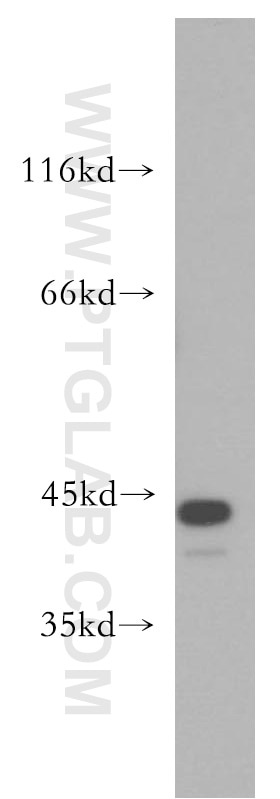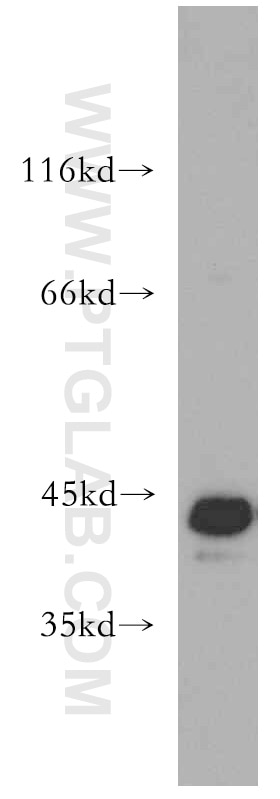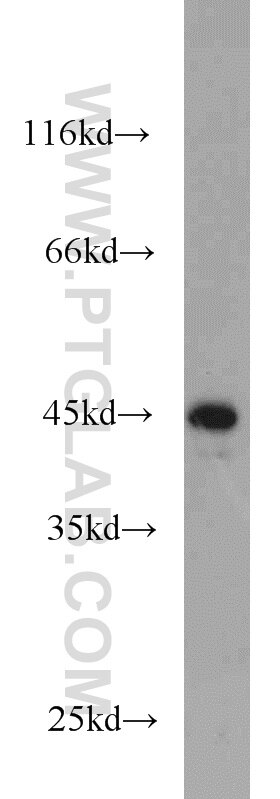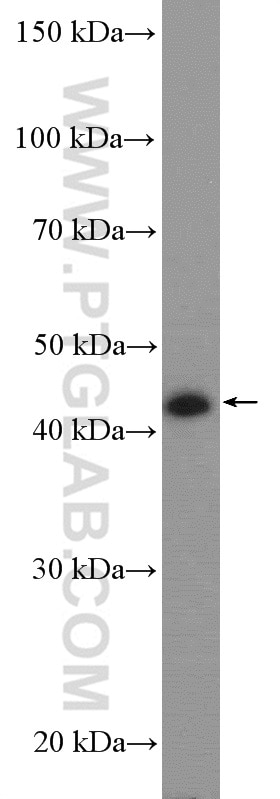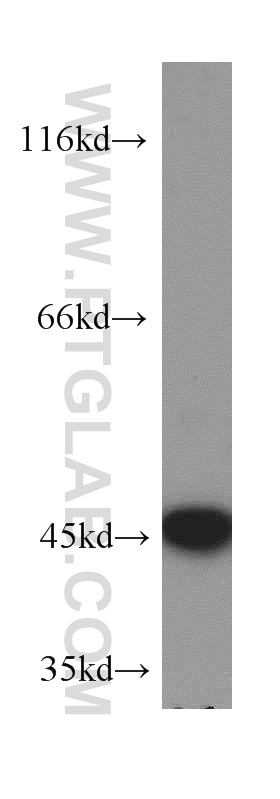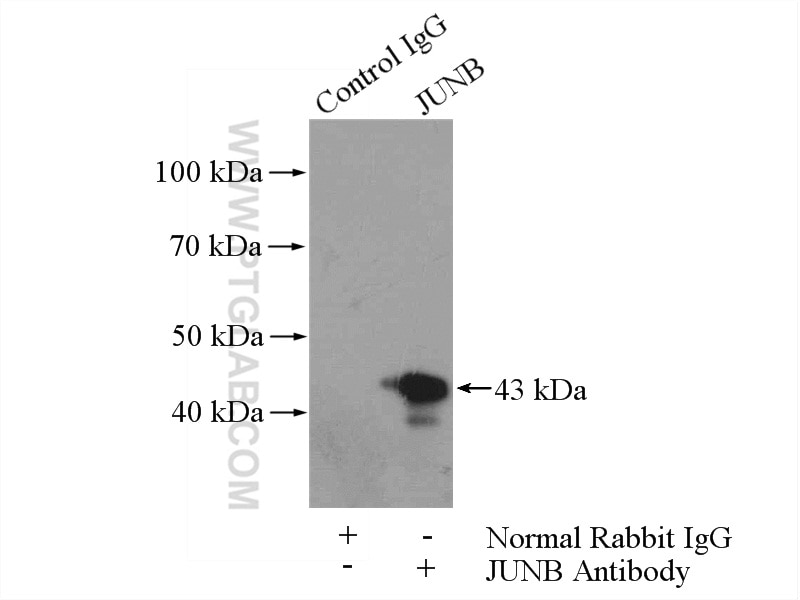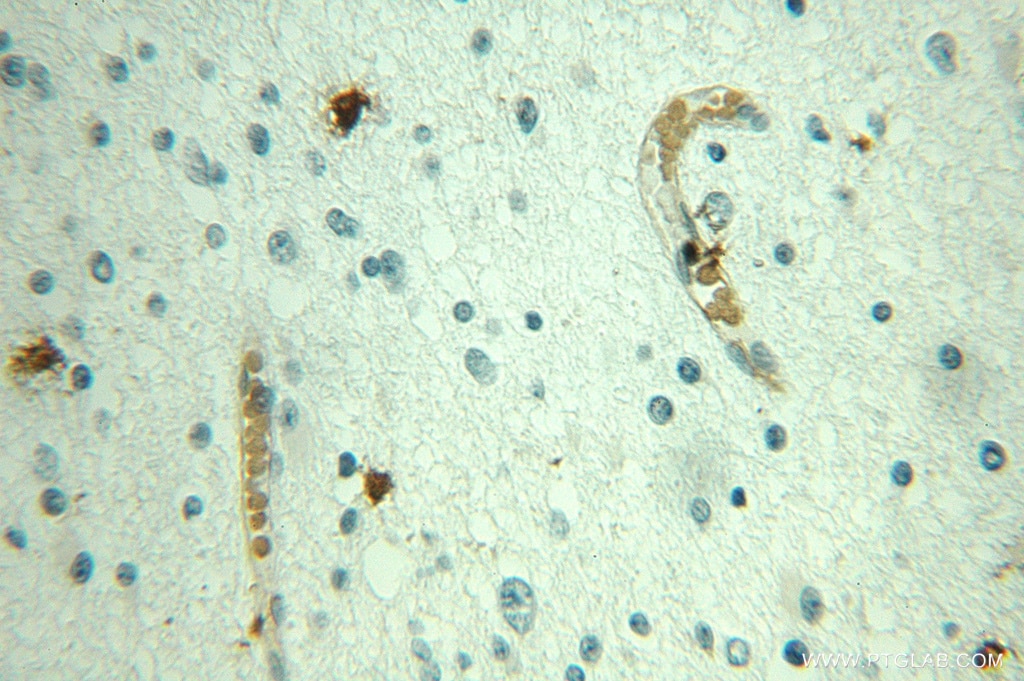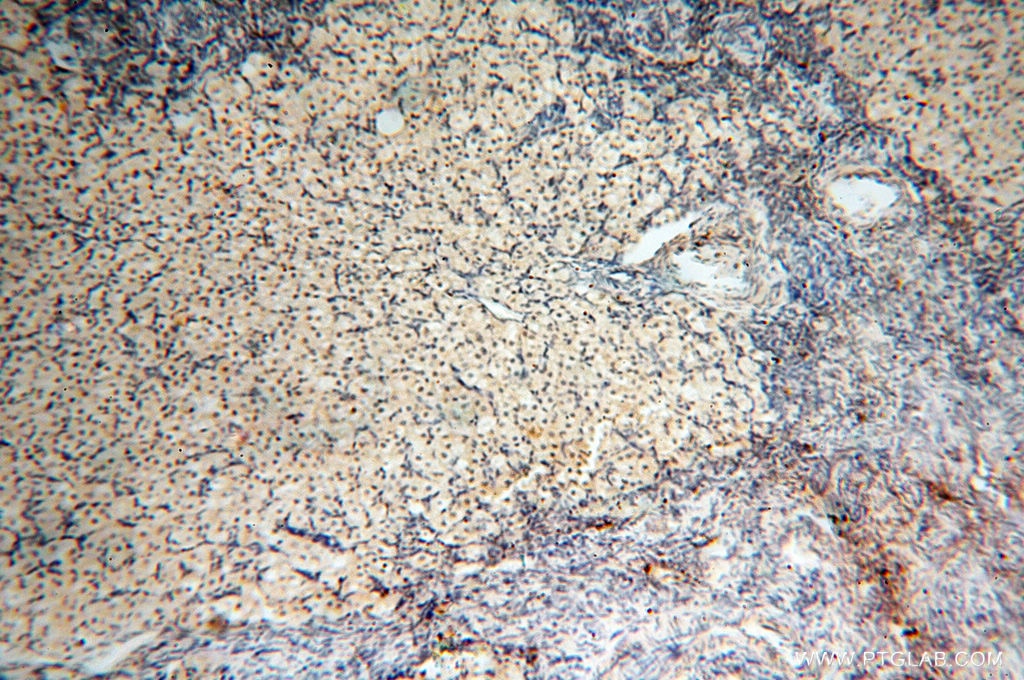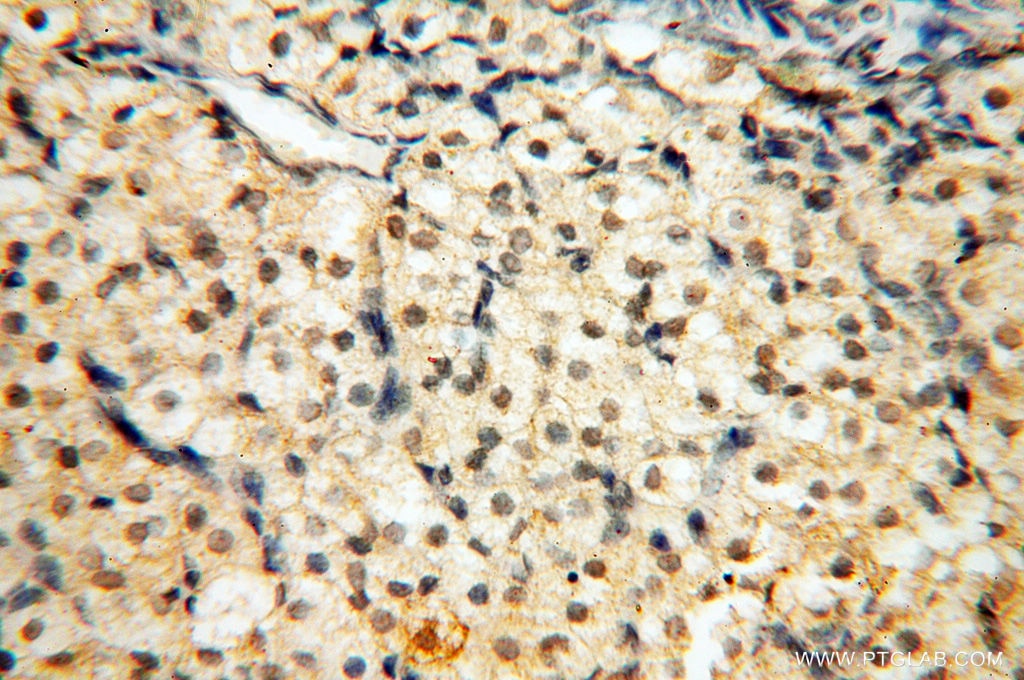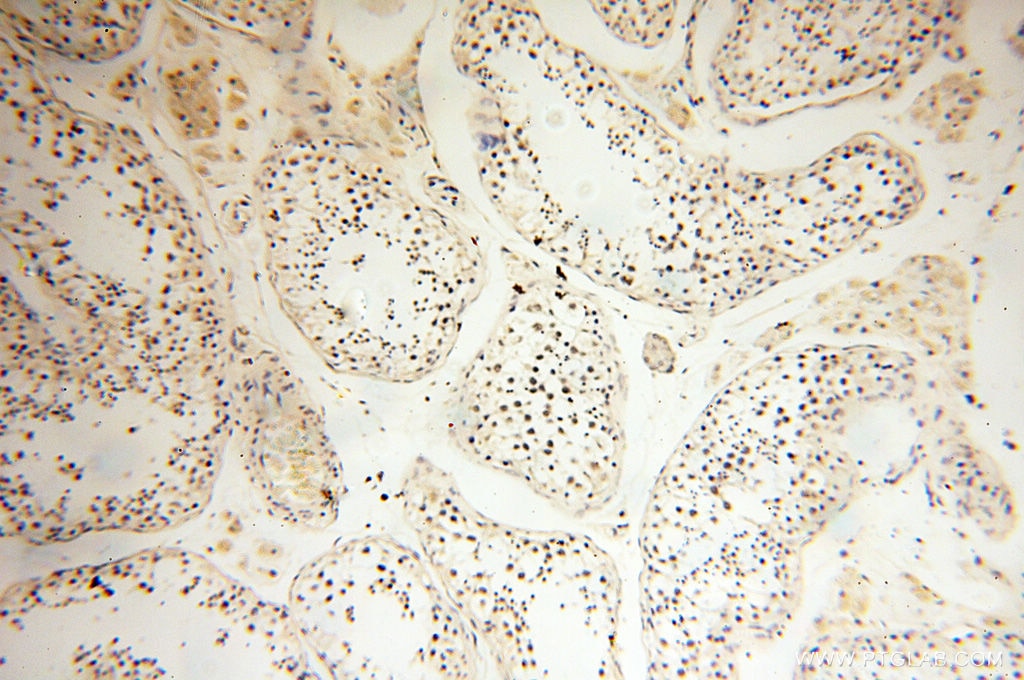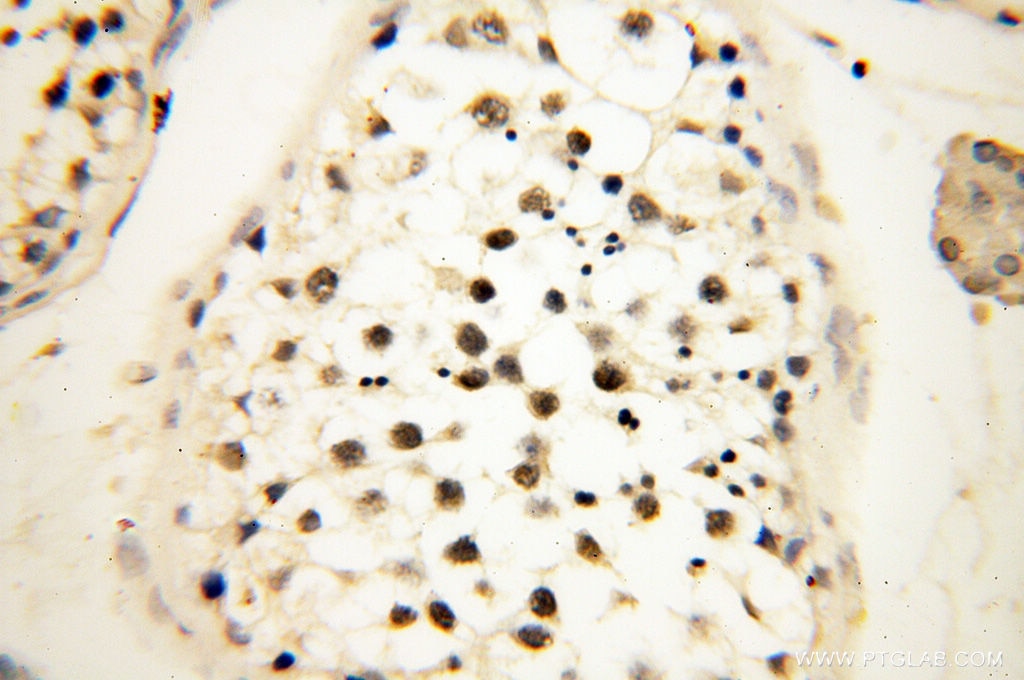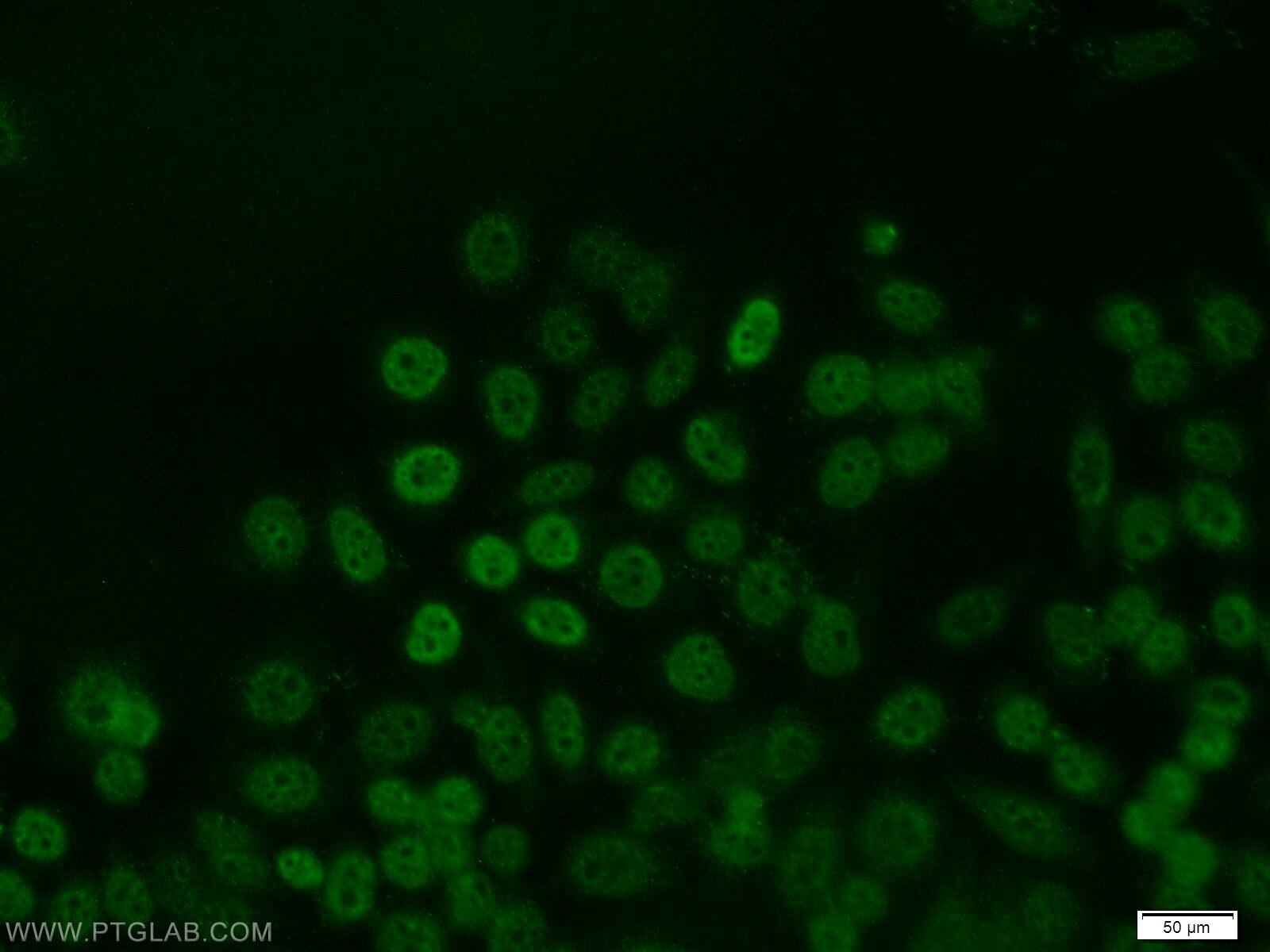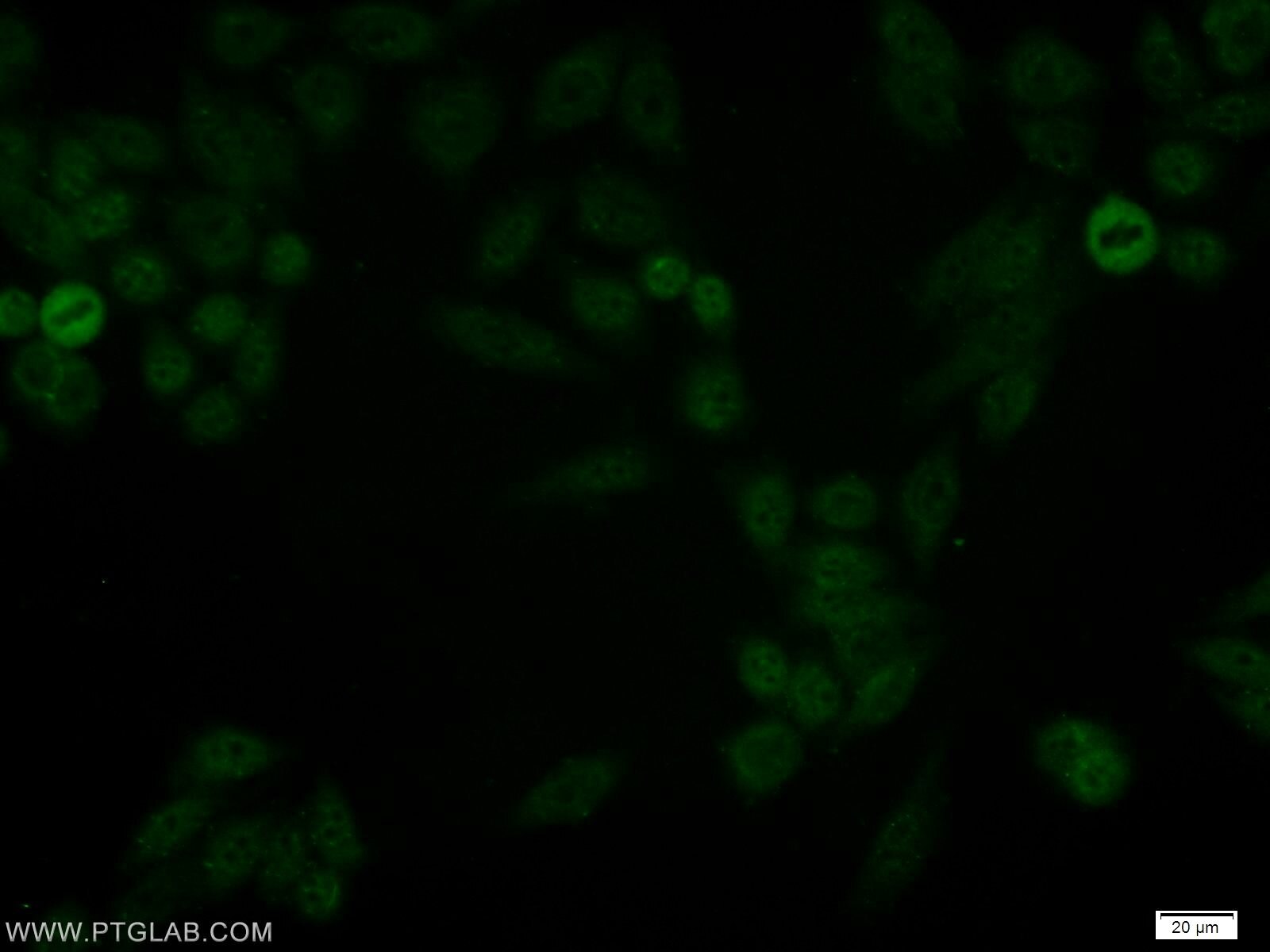- Phare
- Validé par KD/KO
Anticorps Polyclonal de lapin anti-JUNB
JUNB Polyclonal Antibody for WB, IP, IF, IHC, ELISA
Hôte / Isotype
Lapin / IgG
Réactivité testée
Humain, rat, souris
Applications
WB, IHC, IF/ICC, IP, ELISA
Conjugaison
Non conjugué
N° de cat : 10486-1-AP
Synonymes
Galerie de données de validation
Applications testées
| Résultats positifs en WB | cellules MCF7, cellules C6, cellules HeLa, cellules HT-1080 |
| Résultats positifs en IP | cellules HeLa |
| Résultats positifs en IHC | tissu de gliome humain, tissu ovarien humain, tissu testiculaire humain il est suggéré de démasquer l'antigène avec un tampon de TE buffer pH 9.0; (*) À défaut, 'le démasquage de l'antigène peut être 'effectué avec un tampon citrate pH 6,0. |
| Résultats positifs en IF/ICC | cellules MCF-7, cellules HeLa |
Dilution recommandée
| Application | Dilution |
|---|---|
| Western Blot (WB) | WB : 1:500-1:1000 |
| Immunoprécipitation (IP) | IP : 0.5-4.0 ug for 1.0-3.0 mg of total protein lysate |
| Immunohistochimie (IHC) | IHC : 1:20-1:200 |
| Immunofluorescence (IF)/ICC | IF/ICC : 1:10-1:100 |
| It is recommended that this reagent should be titrated in each testing system to obtain optimal results. | |
| Sample-dependent, check data in validation data gallery | |
Applications publiées
| KD/KO | See 1 publications below |
| WB | See 8 publications below |
| IHC | See 1 publications below |
| IF | See 3 publications below |
| CoIP | See 1 publications below |
Informations sur le produit
10486-1-AP cible JUNB dans les applications de WB, IHC, IF/ICC, IP, ELISA et montre une réactivité avec des échantillons Humain, rat, souris
| Réactivité | Humain, rat, souris |
| Réactivité citée | rat, Humain, souris |
| Hôte / Isotype | Lapin / IgG |
| Clonalité | Polyclonal |
| Type | Anticorps |
| Immunogène | JUNB Protéine recombinante Ag0752 |
| Nom complet | jun B proto-oncogene |
| Masse moléculaire calculée | 36 kDa |
| Poids moléculaire observé | 42 kDa, 43 kDa |
| Numéro d’acquisition GenBank | BC004250 |
| Symbole du gène | JUNB |
| Identification du gène (NCBI) | 3726 |
| Conjugaison | Non conjugué |
| Forme | Liquide |
| Méthode de purification | Purification par affinité contre l'antigène |
| Tampon de stockage | PBS avec azoture de sodium à 0,02 % et glycérol à 50 % pH 7,3 |
| Conditions de stockage | Stocker à -20°C. Stable pendant un an après l'expédition. L'aliquotage n'est pas nécessaire pour le stockage à -20oC Les 20ul contiennent 0,1% de BSA. |
Informations générales
JunB is one of the components of the Activator Protein-1 (AP-1) transcription complex that have been implicated in the control ofthe G0/G1 transtion in fibroblasts. AP-1 is a collection of dimers formed by members of the Jun-, Fos-, ATF- and Maf multigene families that bind to specific DNA regulatory elements called AP-1/12-O-tetradecanoylphorbol-13-acetate-responsive elements (TREs) and cAMP-responsive elements (CREs). JunB binds to the DNA sequence 5'-TGA[CG]TCA-3', and involves in the regulation of gene activity following the primary growth factor response. It also acts either as a tumor suppressor or as an oncogene depending on the cell and physiopathological context
Protocole
| Product Specific Protocols | |
|---|---|
| WB protocol for JUNB antibody 10486-1-AP | Download protocol |
| IHC protocol for JUNB antibody 10486-1-AP | Download protocol |
| IF protocol for JUNB antibody 10486-1-AP | Download protocol |
| IP protocol for JUNB antibody 10486-1-AP | Download protocol |
| Standard Protocols | |
|---|---|
| Click here to view our Standard Protocols |
Publications
| Species | Application | Title |
|---|---|---|
Signal Transduct Target Ther MDIG-mediated H3K9me3 demethylation upregulates Myc by activating OTX2 and facilitates liver regeneration | ||
Pharmacol Res Cyclo-(Phe-Tyr) as a novel cyclic dipeptide compound alleviates ischemic/reperfusion brain injury via JUNB/JNK/NF-κB and SOX5/PI3K/AKT pathways. | ||
J Proteome Res Systematic Survey of the Regulatory Networks of the Long Noncoding RNA BANCR in Cervical Cancer Cells. | ||
Exp Cell Res An innovative immunotherapeutic strategy for rheumatoid arthritis: Selectively suppressing angiogenesis and osteoclast differentiation by fully human antibody targeting thymocyte antigen-1 |
